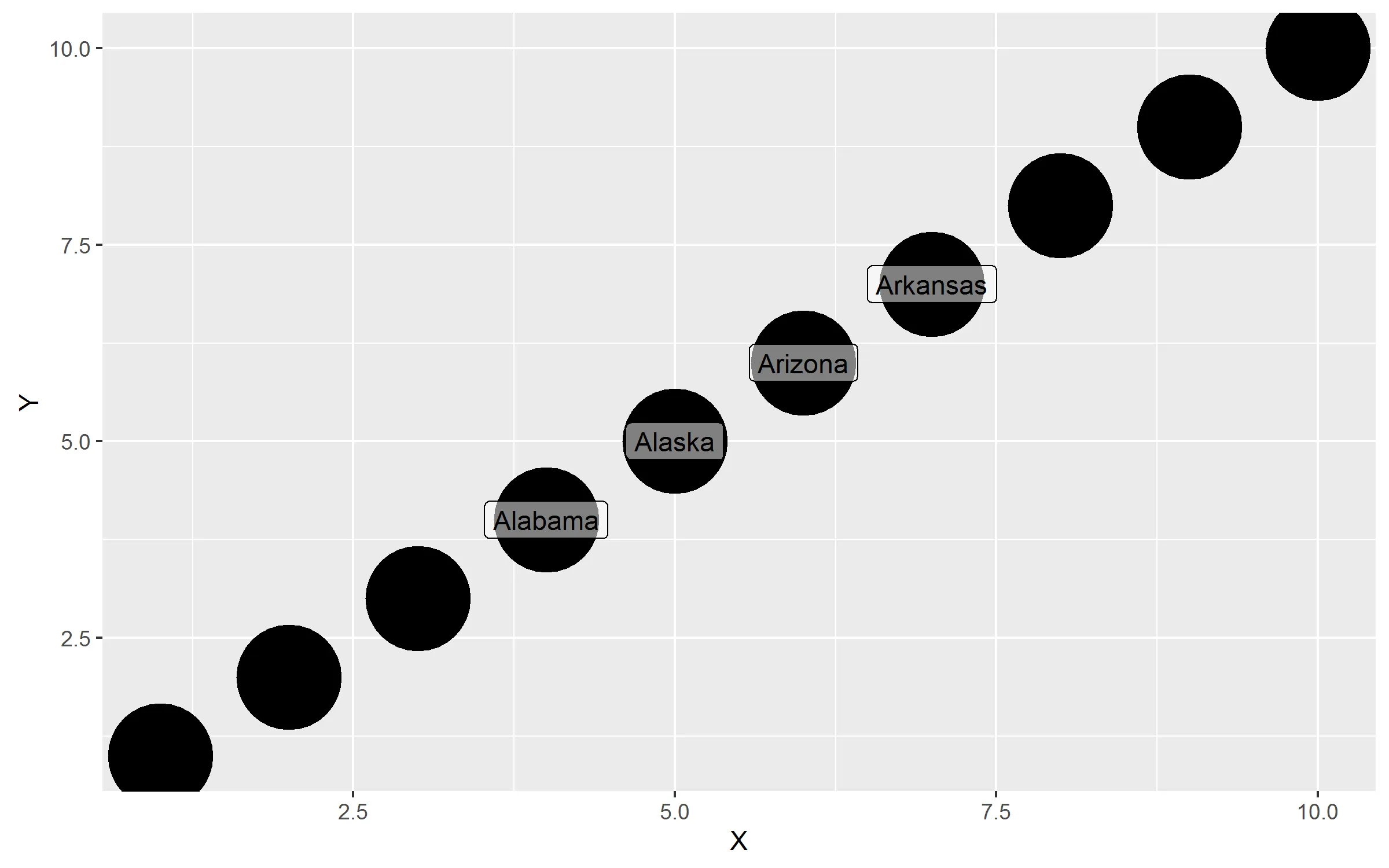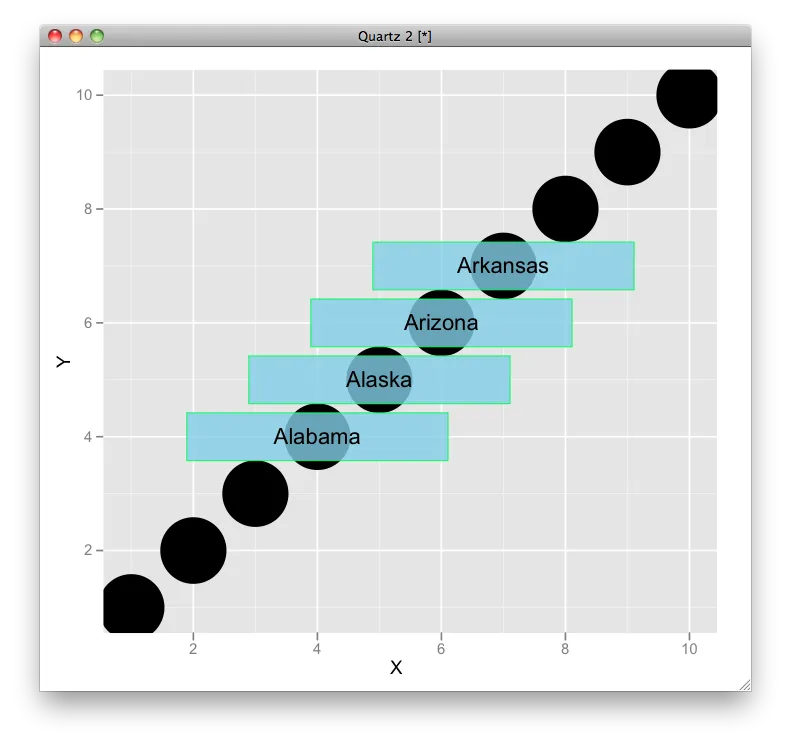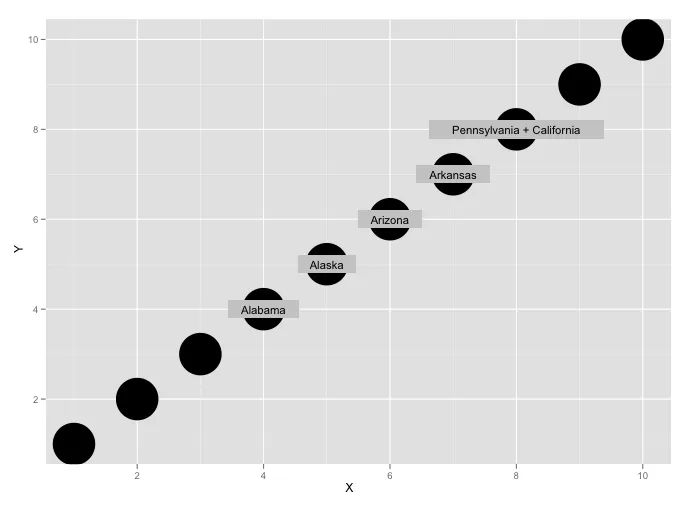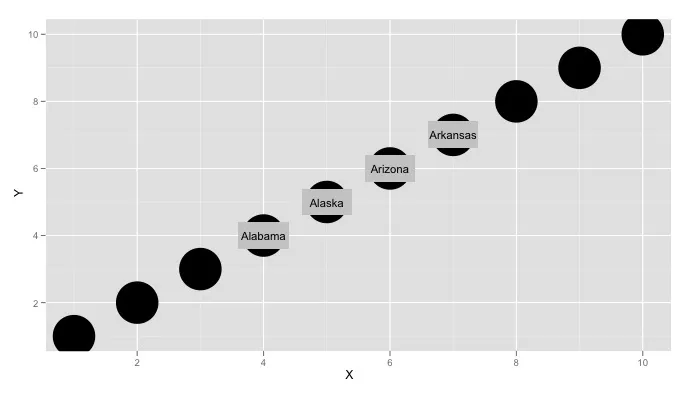在baptiste v0.9的回答之后,这里有一个更新版本,可以 rudimentary 控制框外观(bgfill、bgalpha、bgcol、expand_w、expand_h):
btextGrob <- function (label,x = unit(0.5, "npc"), y = unit(0.5, "npc"),
just = "centre", hjust = NULL, vjust = NULL, rot = 0, check.overlap = FALSE,
default.units = "npc", name = NULL, gp = gpar(), vp = NULL, expand_w, expand_h, box_gp = gpar()) {
if (!is.unit(x))
x <- unit(x, default.units)
if (!is.unit(y))
y <- unit(y, default.units)
grob(label = label, x = x, y = y, just = just, hjust = hjust,
vjust = vjust, rot = rot, check.overlap = check.overlap,
name = name, gp = gp, vp = vp, cl = "text")
tg <- textGrob(label = label, x = x, y = y, just = just, hjust = hjust,
vjust = vjust, rot = rot, check.overlap = check.overlap)
w <- unit(rep(1, length(label)), "strwidth", as.list(label))
h <- unit(rep(1, length(label)), "strheight", as.list(label))
rg <- rectGrob(x=x, y=y, width=expand_w*w, height=expand_h*h,
gp=box_gp)
gTree(children=gList(rg, tg), vp=vp, gp=gp, name=name)
}
GeomTextbox <- proto(ggplot2:::GeomText, {
objname <- "textbox"
draw <- function(., data, scales, coordinates, ..., parse = FALSE, na.rm = FALSE,
expand_w = 1.2, expand_h = 2, bgcol = "grey50", bgfill = "white", bgalpha = 1) {
data <- remove_missing(data, na.rm,
c("x", "y", "label"), name = "geom_textbox")
lab <- data$label
if (parse) {
lab <- parse(text = lab)
}
with(coord_transform(coordinates, data, scales),
btextGrob(lab, x, y, default.units="native",
hjust=hjust, vjust=vjust, rot=angle,
gp = gpar(col = alpha(colour, alpha), fontsize = size * .pt,
fontfamily = family, fontface = fontface, lineheight = lineheight),
box_gp = gpar(fill = bgfill, alpha = bgalpha, col = bgcol),
expand_w = expand_w, expand_h = expand_h)
)
}
})
geom_textbox <- function (mapping = NULL, data = NULL, stat = "identity", position = "identity",
parse = FALSE, ...) {
GeomTextbox$new(mapping = mapping, data = data, stat = stat,position = position,
parse = parse, ...)
}
qplot(wt, mpg, data = mtcars, label = rownames(mtcars), size = wt) +
theme_bw() +
geom_textbox()



